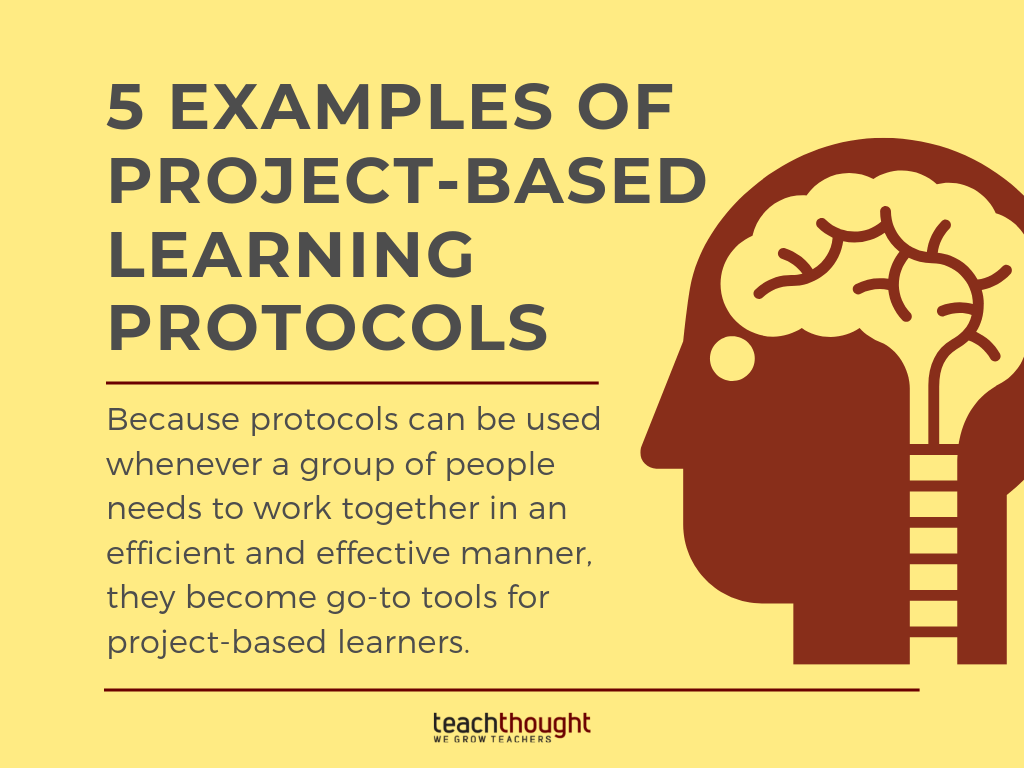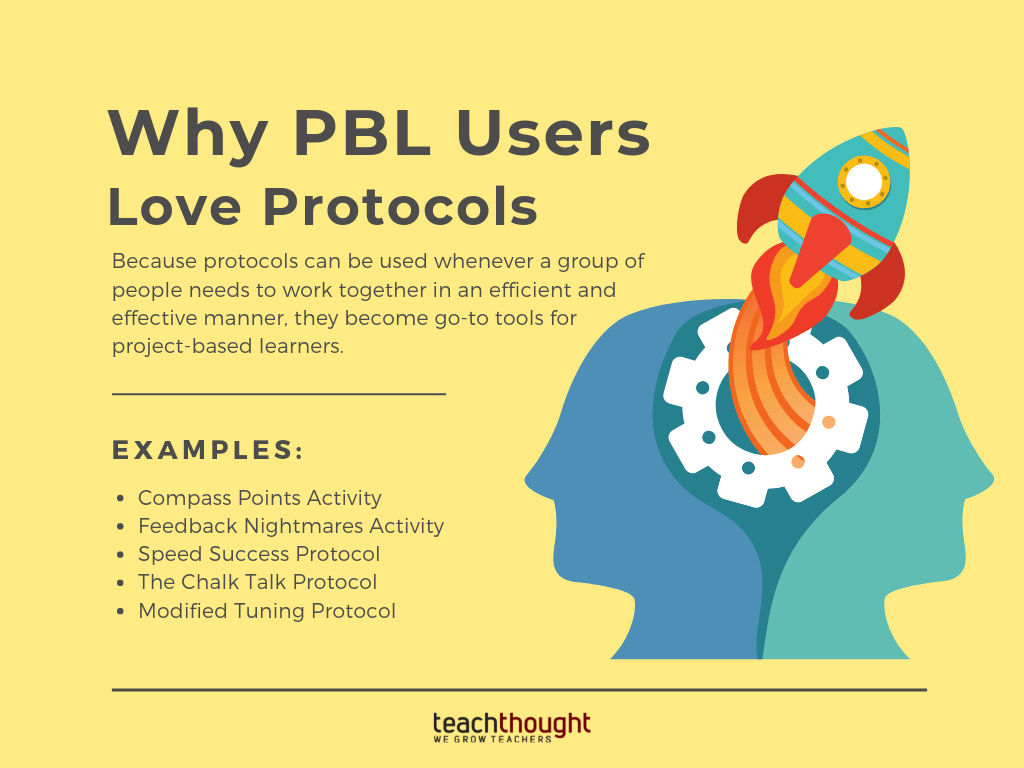
Examples Of Project-Based Learning Protocols
contributed by Michele Mattoon, Director of the National School Reform Faculty
Have you worked with project-based learning protocols?
Schools design Project-Based Learning (PBL) because the process helps engage students in learning and helps them develop necessary real-world skills such as collaboration, problem-solving, and the use of technology. PBL focuses on students working together over a significant amount of time to solve actual problems, answer complex questions, and develop both critical and creative thinking skills.
The structured processes and guidelines of protocols support meaningful, efficient communication, problem-solving, and learning. Protocols give time for active listening and reflection, thereby engaging the brain’s ‘slow’ critical thinking processes (as opposed to the ‘fast’ reactive thinking of the brain). In doing so, they tap into the brain’s capacity for creativity, visualization, and analysis. Protocols ensure that all voices in the group are heard and valued and promote strong communication skills, cross-cultural understandings, and productive collaboration.
Because protocols can be used whenever a group of people needs to work together in an efficient and effective manner, they become go-to tools for project-based learners. Protocols offer structures that guide groups to collaboratively solve real-world problems, ask probing questions, and discover the difference between assumptions and facts.
Those who already know NSRF® protocols and Critical Friends Group® work understand that this is exactly what our organization has been doing for more than 20 years. We develop and then provide educators with an ever-growing library of collaboration and communication tools called ‘protocols.’
Many activities and protocols from NSRF are great to use in PBL classrooms, including:
1. Compass Points Activity allows students to explore their own and their collaborators’ preferences when they are working together. Next, they learn how to leverage these preferences so they may work even more productively as a group.
2. Feedback Nightmares Activity asks participants to share a time when they have received painful and/or useless feedback. Then participants co-create a list of giving and receiving feedback “do’s and don’ts.” This is an important foundational activity before any group is expected to offer useful feedback to their peers.
3. Speed Success Protocol allows participants to analyze their successes so they and their peers might learn from those experiences and incorporate that learning into future projects.
4. The Chalk Talk Protocol, one of our most used protocols in classrooms and meetings, provides structure for a ‘silent conversation’ in order to:
-Brainstorm ideas
-Check on learning
-Develop projects
-Solve problems
5. The original version of the Modified Tuning Protocol was actually created by a teacher so that students in his class could give each other feedback before they presented their final projects. Now the Tuning Protocol is widely used to ‘fine tune’ any piece of student or adult professional work that needs improving.

Text, data, and brainstorming protocols, as well as many materials related to dilemmas, all have uses within PBL environments. Because our work is so focused on collaboration and the resulting student achievement, I might be hard-pressed to think of a protocol that would *not* be suitable in this context.
Together, PBL practices and NSRF tools can help students become continuous life-long learners who successfully navigate through their future lives.
5 Examples Of Project-Based Learning Protocols
